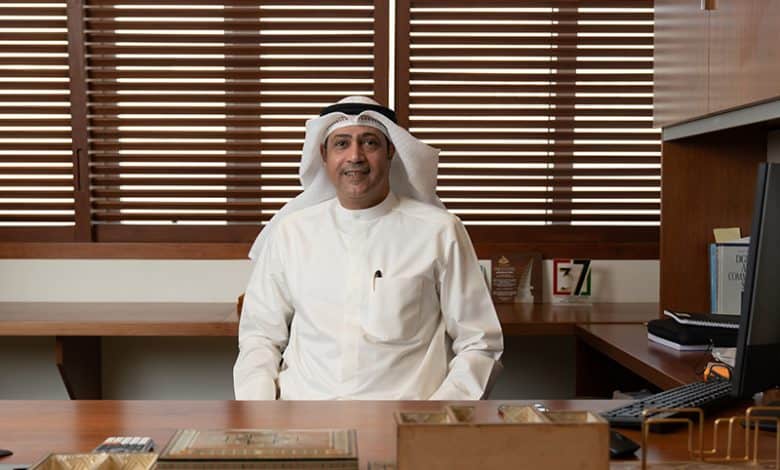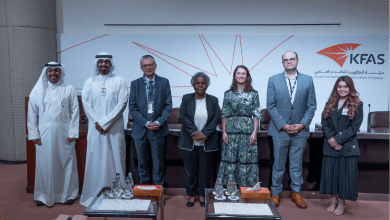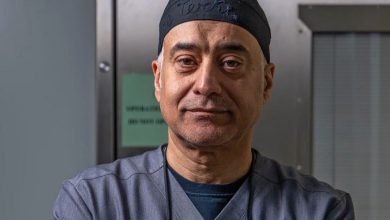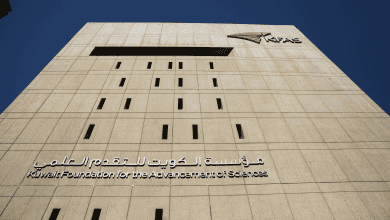Innovating Imaging Systems for Stroke Detection
Ali Almutairi, a professor in the electrical engineering Department at Kuwait University, has put together a team to create a machine that will facilitate medical professionals in detecting strokes in a way that no one has done before.

A stroke is a deadly medical condition in which the blood supply to the brain cuts off due to a severe injury of a vascular cause - it is a medical emergency that needs treatment as soon as possible to avoid the maximum amount of damage to the patient.
“Brain stroke is one of the most frequent causes of death and disability in the world. Worldwide, each year, approximately 16 million people are affected by strokes, of which six million die and another six million become disabled eternally,” said Almutairi. “According to the latest World Health Organization data published in 2018, stroke deaths in Kuwait reached 8.82 percent of total deaths.”
In light of these statistics, Almutairi wanted to bring together a team to create an imaging machine that would detect these medical hazards in their initial stage, without exposing the patient to any harmful radiation. Almutairi received his bachelor’s in electrical engineering from the University of South Florida in early 1993. He was offered a full scholarship in the same year from Kuwait University for his graduate studies and ended up pursuing his master’s and Ph.D. in electrical engineering from the University of Florida, focusing mainly on wireless communication.
His career boasts many achievements, the most recent
being his services to his alma mater, Kuwait University, where he served as
the Vice Dean for Academic Affairs at
the College of Engineering and Petroleum, and then as the Dean for Admission and Registration until recently. He is a senior member of the Institute of Electrical and Electronics Engineers (IEEE) – an esteemed society for professionals – and has served
as an editor and reviewer for many
technical publications.
When faced with the jarring realities of strokes and the lacking medical equipment, Almutairi had the vision to create a portable microwave imaging system that would be relatively quick and cost-effective, as opposed to the traditional imaging scans that are common today. As microwave imaging is the core of this project, his team consists of qualified individuals that have been carefully selected based on their research experience and publications in the related field of microwave imaging. However, the road to realizing this project has not been easy.
“The Kuwait Foundation for the Advancement of Sciences (KFAS) has a major role in improving the proposal through a rigorous review process,” Almutairi said, as he recounted the initial struggles they faced. The team still has a long way ahead of them.
Magnetic Resonance Imaging (MRI), X-Rays, and Computerized Tomography (CT) are amongst the common procedures undertaken for the treatment of strokes. But unfortunately, they have the potential to pose various hazards to patients who are already undergoing a medical emergency. “The main disadvantages of CT scanning and X-Ray imaging are the dangerous radiations,” he said.
A brief list of hazards posed by these procedures includes ionizing radioactivity and cancer as potential risks, along with the high possibility of a false negative report. MRIs can detect the presence of a disease within the human body, but the procedure is more expensive than the others and is less effective in cases of strokes. Ultrasounds are another commonly used procedure, and while they work better for certain diseases, they are unable to produce a perfect image of the scanned area. For a medical emergency like a stroke, there must be a system in place that is quick, safe, and accurate.
“There is a strong demand to solve the aforementioned problems by developing a compact and mobile technology that can be applied to the patient in real-time, either at the bedside or emergency room to monitor the stroke,” he said. “Because of the attractive features of non-ionizing radiations, less cost, and no side effects, the proposed imaging technique can frequently be used to identify stroke in the human head at any time, which give it an upper hand over presently-used imaging systems.”
The imaging system works by employing prototyped wideband antennas that will be uniformly placed over the patient’s head. The signals transmitted by these antennas will have a higher detection sensitivity and will be collected by a commercially available microwave transceiver.
“Stroke monitoring using a microwave imaging system is based on measurement and analysis of microwave signals that are scattered by a microwave illuminated human head,” said Almutairi.
One antenna at a time transmits the signals while the others receive them; these signals are then converted to digital data after which they are processed and analyzed to detect the pool of blood formed in the brain due to the stroke.
The team plans to conduct several experiments where they will, as Almutairi explained, “mimic the monitoring process of the brain stroke from its onset to chronic state.” This monitoring process will observe experiments that will run the imaging system through different physiological stages, and their result will determine the consideration of clinical trials in realistic scenarios. Once the system has proven efficient in clinical trials, it will then be open to application in clinics and ambulances for the earliest care and monitoring of the patients.
As the project is still in its initial stages, there is still a long way to go until they can see results, however, Almutairi is optimistic about the progress and appreciates the funding KFAS
has provided.
“The outcome of the project will expedite the increasing demand for imaging systems by preventing the fatality rate due to stroke, supporting KFAS’ mission to stimulate and catalyze the advancement of science, technology and innovation for the benefit of society, research, and enterprise in Kuwait,” he said. Almutairi hopes that the success of this project will be able to help those who cannot afford expensive treatments and will thus aid in reducing the number of deaths caused by stroke in Kuwait, while also reinforcing the country’s economic growth. He hopes that this project would inspire more research in this field and that the local technical capabilities would be pushed to new limits.




